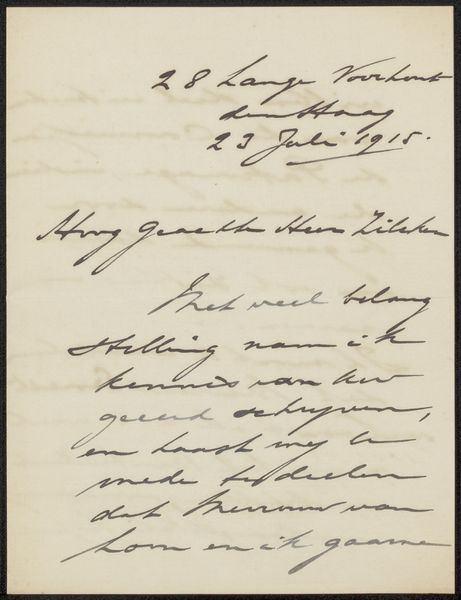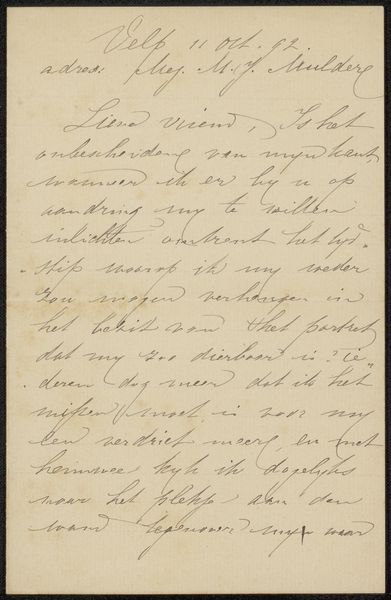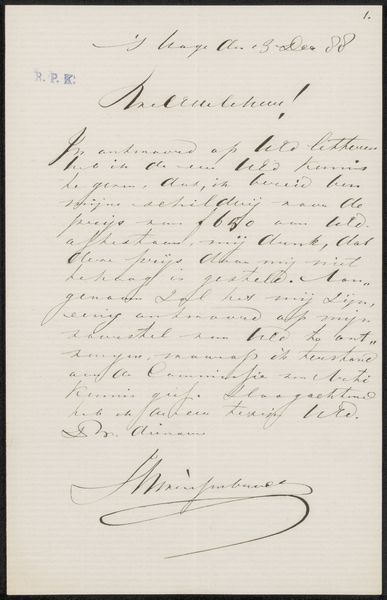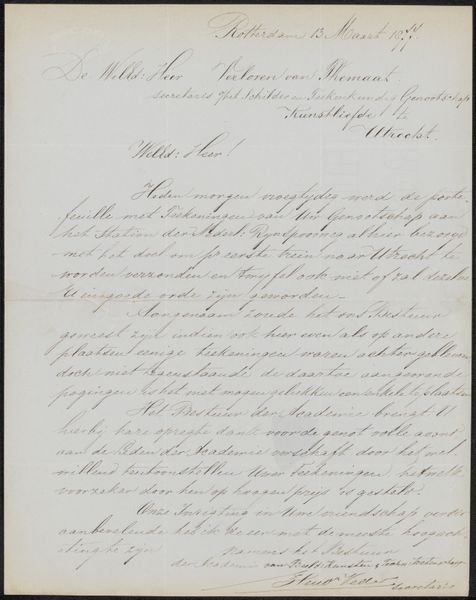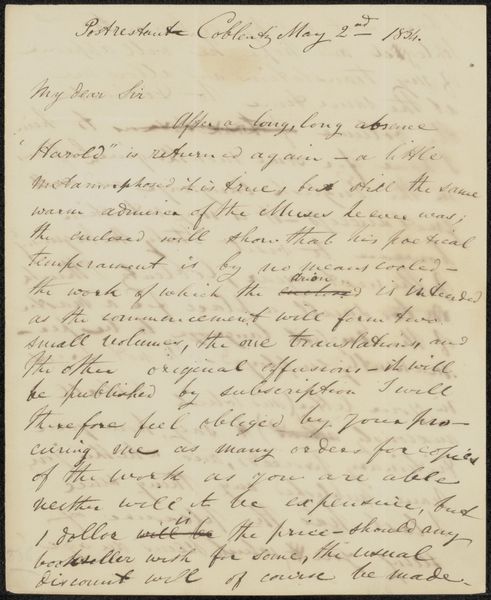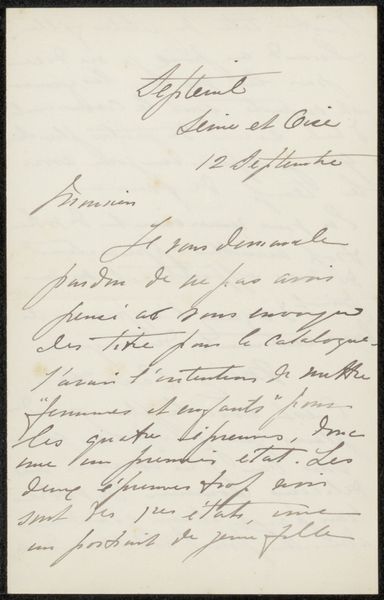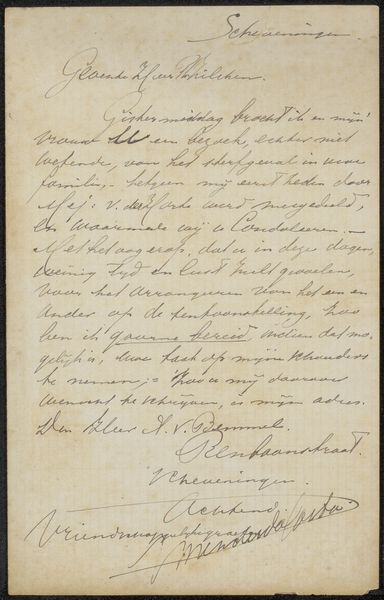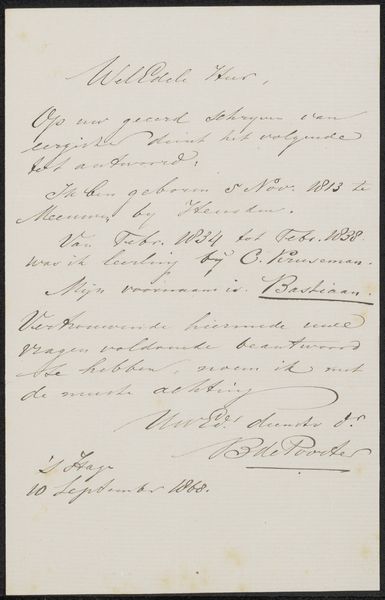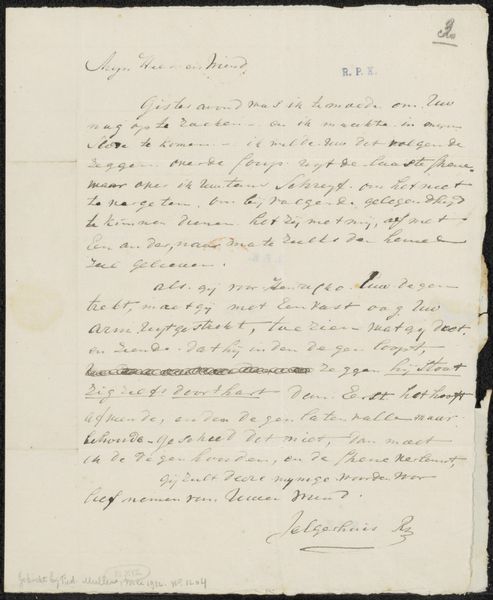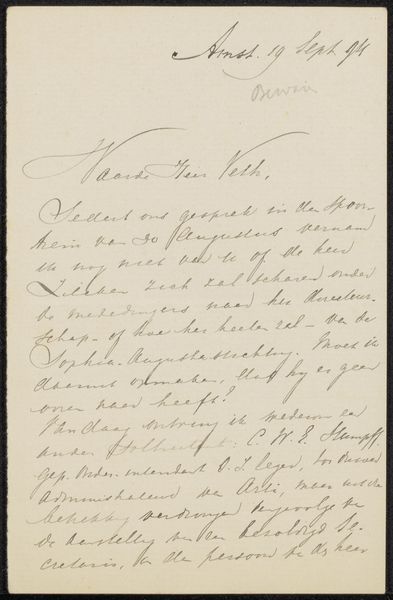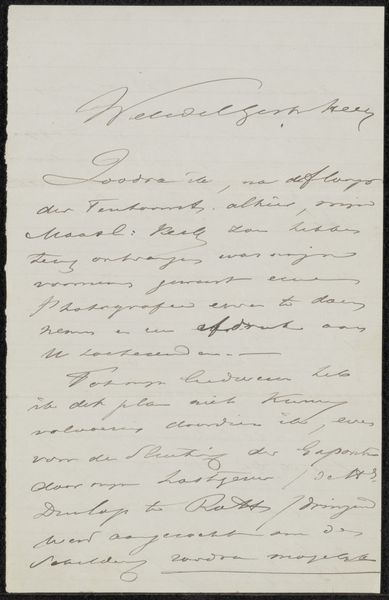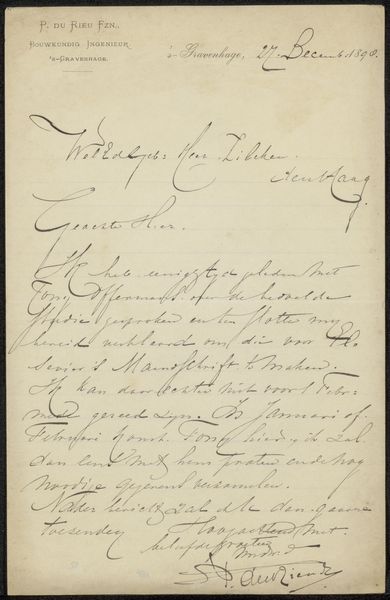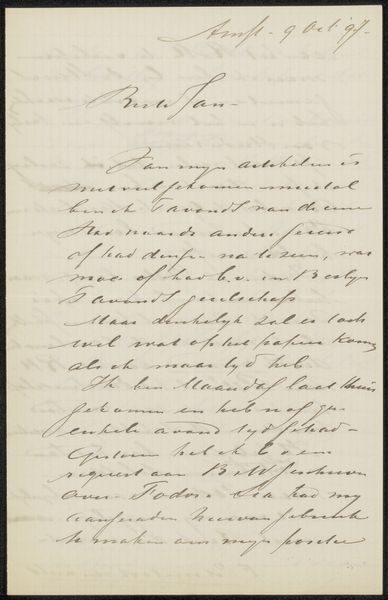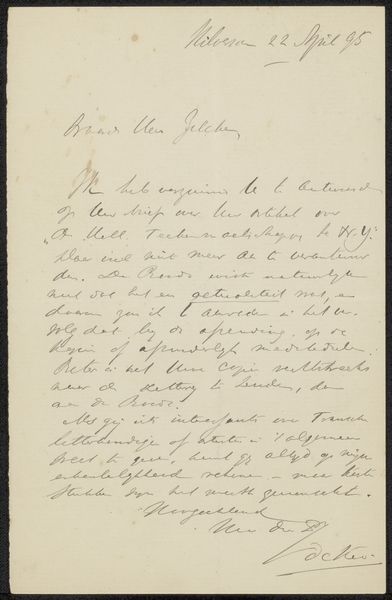
Brief aan de Commissie van de Tentoonstelling van Levende Meesters in Utrecht Possibly 1866
0:00
0:00
drawing, paper, ink
#
portrait
#
drawing
#
paper
#
personal sketchbook
#
ink
#
calligraphy
Copyright: Rijks Museum: Open Domain
Curator: This is "Brief aan de Commissie van de Tentoonstelling van Levende Meesters in Utrecht," possibly from 1866, by Jan Striening. It’s ink on paper. Editor: It feels incredibly delicate, doesn't it? I'm struck by the precision of the calligraphy; the materials of ink and paper almost disappear behind the skill of the hand. What stands out to you? Curator: The act of writing itself, the labour involved in producing this document, interests me. Look closely at the letter's purpose: submitting artwork to an exhibition. Consider the role of exhibitions in legitimizing art and artists. How does the choice of materials and the sheer effort of meticulous calligraphy function within this social transaction? Is Striening showcasing not only his art, but also his dedication and worth through the craft of his letter? Editor: That's a really interesting point. It makes me think about how art schools often separated "fine art" like painting from crafts. The care taken in even the written application sort of blurs that line, right? Curator: Precisely! It challenges the hierarchical values assigned to different forms of making. We see labor invested not just in the artwork proposed, but in every aspect of the application, in the hope of acceptance by the establishment. Are we looking at a rebellion or dutiful application, in other words is this about subverting the elite or joining them? Editor: I never would have thought of it that way! I'm going to rethink how I see works on paper, paying much more attention to their making as craft. Curator: The more you study, the more questions that arise, that is the reward of thinking about the processes and labor of art-making!
Comments
No comments
Be the first to comment and join the conversation on the ultimate creative platform.
